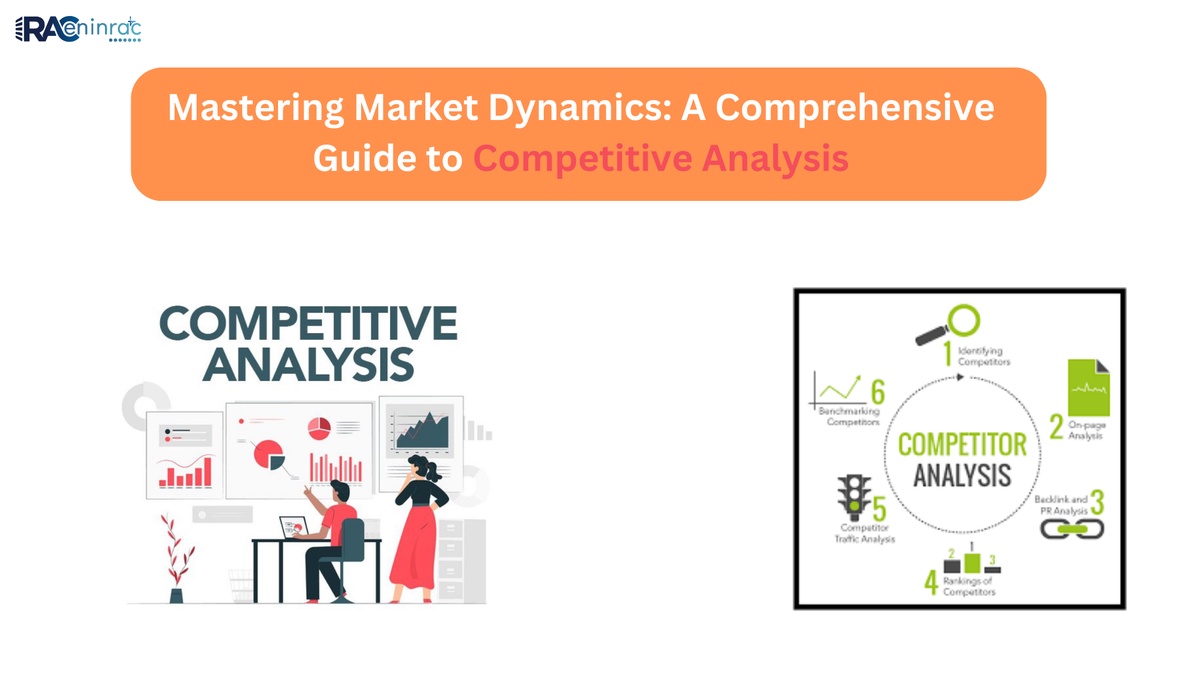In today's fast-paced business environment, staying ahead of the competition is more critical than ever. To thrive in an increasingly competitive landscape, companies must possess a deep understanding of their market dynamics, competitors, and industry trends. This is where competitive analysis comes into play. Competitive analysis is a strategic process that enables businesses to assess their competitors' strengths and weaknesses, identify opportunities and threats, and formulate effective strategies to gain a competitive advantage. In this comprehensive guide, we'll delve into the fundamentals of competitive analysis and explore how businesses can leverage this powerful tool to drive success.
Understanding Competitive Analysis
Competitive analysis involves evaluating the strengths and weaknesses of current and potential competitors to inform business decision-making. It provides valuable insights into market trends, customer preferences, and competitive positioning, enabling organizations to make informed strategic choices. By conducting a thorough competitive analysis, businesses can identify untapped market opportunities, anticipate competitive threats, and refine their value proposition to meet customer needs effectively.
Key Components of Competitive Analysis
Competitor Identification: The first step in competitive analysis is identifying key competitors operating within the same industry or market segment. This includes both direct competitors offering similar products or services and indirect competitors addressing similar customer needs through alternative solutions.
Market Positioning: Analyzing competitors' market positioning helps businesses understand how they are perceived by customers relative to their competitors. This involves assessing factors such as brand reputation, product differentiation, pricing strategies, and customer value propositions.
SWOT Analysis: Conducting a SWOT analysis (Strengths, Weaknesses, Opportunities, Threats) enables businesses to identify internal strengths and weaknesses as well as external opportunities and threats. This analysis provides a comprehensive overview of the competitive landscape and helps prioritize strategic initiatives.
Market Trends and Dynamics: Monitoring market trends, industry developments, and emerging technologies is crucial for staying ahead of the competition. By understanding shifting consumer preferences, technological advancements, and regulatory changes, businesses can adapt their strategies accordingly and seize new opportunities.
Competitive Benchmarking: Benchmarking against competitors allows businesses to compare their performance metrics, such as market share, sales growth, profitability, and customer satisfaction, against industry peers. This helps identify areas of competitive advantage and areas for improvement.
Tools and Techniques for Competitive Analysis
Several tools and techniques can be employed to conduct competitive analysis effectively:
Market Research: Market research involves gathering data on customer preferences, market trends, competitor offerings, and industry dynamics through surveys, focus groups, interviews, and secondary research. This provides valuable insights into consumer behavior and competitive positioning.
Competitor Intelligence: Competitor intelligence involves systematically collecting and analyzing information on competitors' strategies, products, pricing, distribution channels, marketing campaigns, and customer feedback. This can be obtained through sources such as competitor websites, industry reports, news articles, and social media monitoring.
SWOT Analysis: SWOT analysis is a structured framework for assessing strengths, weaknesses, opportunities, and threats facing a business or its competitors. It helps identify internal capabilities, external challenges, and areas for strategic focus.
Porter's Five Forces Analysis: Porter's Five Forces framework evaluates the competitive intensity and attractiveness of an industry by analyzing the bargaining power of buyers, suppliers, new entrants, substitutes, and existing competitors. This helps businesses understand the underlying forces shaping competition within their industry.
Competitive Benchmarking: Competitive benchmarking involves comparing key performance metrics and best practices against industry peers or leading competitors. This provides insights into areas of competitive advantage and opportunities for improvement.
Strategies for Competitive Advantage
Armed with insights from competitive analysis, businesses can develop strategies to gain a competitive advantage:
Product Differentiation: Differentiating products or services based on unique features, quality, performance, or value proposition can help businesses stand out in a crowded marketplace and attract customers.
Cost Leadership: Implementing cost-effective production processes, optimizing supply chain management, and offering competitive pricing can enable businesses to gain a cost advantage over competitors and capture market share.
Market Segmentation: Targeting specific market segments or niche markets with tailored products, services, and marketing messages allows businesses to focus resources more effectively and address the unique needs of different customer groups.
Innovation: Investing in research and development to innovate new products, technologies, or business models can create opportunities for differentiation and disrupt the market.
Strategic Partnerships: Collaborating with complementary businesses, suppliers, distributors, or strategic alliances can expand market reach, enhance capabilities, and create synergies that drive growth.
Case Studies: Real-World Examples of Competitive Analysis in Action
Apple vs. Samsung: Apple and Samsung are fierce competitors in the global smartphone market. Through competitive analysis, both companies closely monitor each other's product features, design innovations, marketing strategies, and customer feedback to stay ahead of the curve and maintain their market share.
Coca-Cola vs. PepsiCo: Coca-Cola and PepsiCo are longstanding rivals in the beverage industry. Competitive analysis helps both companies track consumer preferences, market trends, and competitor initiatives to adjust their product portfolios, marketing campaigns, and distribution strategies accordingly.
Conclusion
In today's hypercompetitive business landscape, competitive analysis is essential for businesses to survive and thrive. By understanding their competitors' strengths and weaknesses, identifying market opportunities and threats, and developing strategies to gain a competitive advantage, businesses can position themselves for success in the marketplace. By leveraging the tools, techniques, and strategies outlined in this guide, businesses can navigate market dynamics effectively, drive innovation, and achieve sustainable growth in an increasingly competitive world.
More market research, advisory consulting services to discover
At Eninrac, we offer a wide range of, advisory consulting solutions, from We put ‘search’ in research to help expand your business with ease. Discover all the possibilities now.


No comments yet